Analysis of Pollutants for the Sustainable Reuse of Waste Lubricant Oils
Abstract
:1. Introduction
2. Materials and Methods
2.1. The CONOU Protocol for Analyses
2.2. Reagents
2.3. Procedure for the Preparation of the Samples
- A total of 1 g of product obtained from the sample, previously homogenized for 5 min at 15,000 rpm, was placed in a 50 mL volumetric flask;
- Then, 4 g of RefOil were added to the sample;
- Next, 1 mL of internal standard solution (CONOSTAN Cobalt 5000 ppm viscosity 20Cst. code 150-500-275), obtained by diluting 20 g of pure standard in 1 L of xylene, was added to the volumetric flask;
- Xylene RPE was used to make up to volume;
- After stirring and complete dissolution of the sample, the contents of the flask were directly analyzed through the ICP-AES technique, recording the analytical results, obtained by comparison with the calibration lines previously prepared in the same way, as reported below.
2.4. Statistical Methods
2.4.1. Robust Statistics: Mean and Standard Deviation
- (1)
- Considering p measures (x1, x2,….xp), they are first placed in increasing order from minor to major, obtaining the ordered sequence: x(1), x(2),…. x(p).
- (2)
- The median (x*) of the measures xi (i = 1, 2, ….p), is calculated.
- (3)
- s* as the median of the values is calculated, with i = 1, 2, …., p; s* = 1.483 average of .
- (4)
- An iterative procedure is started to progressively update the x* and s* values, according to the following steps:
- (5)
- is calculated.
- (6)
- For each of the xi, i = 1, 2, …, p, are calculated according to the relation
- (7)
- The new values of x* and s* are calculated with the following relations:
2.4.2. Huber’s Test
- (1)
- The median of the data xi is calculated by sorting them in ascending order (xm), according to AMC (2001) [22].
- (2)
- The differences (Di) between the single values and the median (xm) are calculated:
- (3)
- The differences (Di) are ordered, in absolute value, in an increasing sense;
- (4)
- The median (Dm) of the differences is calculated.
- (5)
- The differences in Di with respect to Dm are compared by applying the relation:
- (a)
- : acceptable value.
- (b)
- : unacceptable value (outlier).
2.4.3. Cochran Test
- (1)
- The value of C is less than or equal to the critical value of 5%: the data are correct;
- (2)
- The value of C is higher than the critical value of 5%, but it is lower than the value referred to as 1%: the data are labeled as deviant (straggler) but are maintained;
- (3)
- The value of C is higher than the critical value of 1%: in this case, the data are to be considered an outlier and must be discarded.
2.4.4. z-Scores
- :
- sample i z-score for laboratory j
- :
- mean of the values obtained for sample i by the laboratory j
- :
- consensus value across all laboratories for sample i (robust mean)
- :
- robust standard deviation for sample i
- A result that gives |z| ≤ 2.0 is considered to be acceptable;
- A result that gives 2.0 < |z| < 3.0 is considered a warning signal;
- A result that gives |z| ≥ 3.0 is considered to be unacceptable (or an action signal).
3. Results and Discussion
3.1. Robust Means
3.2. z-Scores
3.3. Huber’s Test
3.4. Repeatability and Reproducibility
4. Conclusions
Author Contributions
Funding
Institutional Review Board Statement
Informed Consent Statement
Data Availability Statement
Acknowledgments
Conflicts of Interest
References
- Nowak, P.; Kucharska, K.; Kamiński, M. Ecological and Health Effects of Lubricant Oils Emitted into the Environment. Int. J. Environ. Res. Public Health 2019, 16, 3002. [Google Scholar] [CrossRef] [PubMed]
- Benessere, V.; Cucciolito, M.E.; Dal Poggetto, G.; Di Serio, M.; López Granados, M.; Ruffo, F.; Vitagliano, A.; Vitiello, R. Strategies for immobilizing homogeneous zinc catalysts in biodiesel production. Catal. Commun. 2014, 56, 81–85. [Google Scholar] [CrossRef]
- Tesser, R.; Russo, V.; Turco, R.; Vitiello, R.; Di Serio, M. Bio-lubricants synthesis from the epoxidized oil promoted by clays: Kinetic modelling. Chem. Eng. Sci. 2020, 214, 115445. [Google Scholar] [CrossRef]
- Mishra, A.; Siddiqi, H.; Kumari, U.; Behera, I.D.; Mukherjee, S.; Meikap, B.C. Pyrolysis of waste lubricating oil/waste motor oil to generate high-grade fuel oil: A comprehensive review. Renew. Sustain. Energy Rev. 2021, 150, 111446. [Google Scholar] [CrossRef]
- Lei, B.; Wu, Y.T.; Wang, W.; Wang, J.F.; Ma, C.F. A study on lubricant oil supply for positive-displacement expanders in small-scale organic Rankine cycles. Energy 2014, 78, 846–853. [Google Scholar] [CrossRef]
- Pan, Y.; Abazari, R.; Tahir, B.; Sanati, S.; Zheng, Y.; Tahir, M.; Gao, J. Iron-based metal–organic frameworks and their derived materials for photocatalytic and photoelectrocatalytic reactions. Coord. Chem. Rev. 2024, 499, 215538. [Google Scholar] [CrossRef]
- Li, X.M.; Jia, J.; Yang, D.; Jin, J.; Gao, J. Construction of biomimetic proton transport channels in metal-organic framework. Chin. Chem. Lett. 2024, 35, 108474. [Google Scholar] [CrossRef]
- Santos, J.C.O.; Santos, I.M.G.; Souza, A.G. Thermal Degradation Process of Synthetic Lubricating Oils: Part I—Spectroscopic Study. Petrol. Sci. Technol. 2015, 33, 1238–1245. [Google Scholar] [CrossRef]
- Santos, J.C.O.; Santos, I.M.G.; Souza, A.G. Thermal degradation of synthetic lubricating oils: Part III—TG and DSC studies. Petrol. Sci. Technol. 2017, 35, 540–546. [Google Scholar] [CrossRef]
- Mishra, A.; Kumari, U.; Turlapati, V.Y.; Siddiqi, H.; Meikap, B.C. Extensive thermogravimetric and thermo-kinetic study of waste motor oil based on iso-conversional methods. Energy Convers. Manag. 2020, 221, 113194. [Google Scholar] [CrossRef]
- Wang, J.; Jia, C.R.; Wong, C.K.; Wong, P.K. Characterization of Polycyclic Aromatic Hydrocarbons Created in Lubricating Oils. Water Air Soil Pollut. 2000, 120, 381–396. [Google Scholar] [CrossRef]
- de Souza, C.V.; Corrêa, S.M. Polycyclic aromatic hydrocarbons in diesel emission, diesel fuel and lubricant oil. Fuel 2016, 185, 925–931. [Google Scholar] [CrossRef]
- Arpa, O.; Yumrutas, R.; Alma, M.H. Effects of turpentine and gasoline-like fuel obtained from waste lubrication oil on engine performance and exhaust emission. Energy 2010, 35, 3603–3613. [Google Scholar] [CrossRef]
- Bhaskar, T.; Uddin, M.A.; Muto, A.; Sakata, Y.; Omura, Y.; Kimura, K.; Kawakami, Y. Recycling of waste lubricant oil into chemical feedstock or fuel oil over supported iron oxide catalysts. Fuel 2004, 83, 9–15. [Google Scholar] [CrossRef]
- Mamun, A.A.; Al-Abdul Wahhab, H.I. Evaluation of Waste Engine Oil-Rejuvenated Asphalt Concrete Mixtures with High RAP Content. Adv. Mater. Sci. Eng. 2018, 2018, 7386256. [Google Scholar] [CrossRef]
- Pawlaka, Z.; Urbaniak, W.; Kaldonski, T.; Styp-Rekowski, M. Energy conservation through recycling of used oil. Ecol. Eng. 2010, 36, 1761–1764. [Google Scholar] [CrossRef]
- Conou. Available online: https://www.conou.it/en/ (accessed on 16 January 2024).
- Kelly, J.F.; Cotterell, M.G. Minimal lubrication machining of aluminium alloys. J. Mater. Process. Technol. 2002, 120, 327–334. [Google Scholar] [CrossRef]
- Sarkar, S.; Datta, D.; Deepak, K.S.; Mondal, B.K.; Das, B. Comprehensive investigation of various re-refining technologies of used lubricating oil: A review. J. Mater. Cycles Waste Manag. 2023, 25, 1935–1965. [Google Scholar] [CrossRef]
- ASTM D5185-18; Standard Test Method for Multielement Determination of Used and Unused Lubricating Oils and Base Oils by Inductively Coupled Plasma Atomic Emission Spectrometry (ICP-AES). ASTM: West Conshohocken, PA, USA, 2018.
- ISO 13528:2015; Statistical Methods for Use in Proficiency Testing by Interlaboratory Comparison. ISO: Geneva, Switzerland, 2015.
- Analytical Methods Committee, Royal Society of Chemistry, No. 6. April 2001. Available online: https://rsc.org/images/robust-statistics-technical-brief-6_tcm18-214850.pdf (accessed on 16 January 2024).
- ISO 5725-2; Accuracy (Trueness and Precision) of Measurement Methods and Results—Part 2: Basic Method for the Determination of Repeatability and Reproducibility of a Standard Measurement Method. ISO: Geneva, Switzerland, 2019.
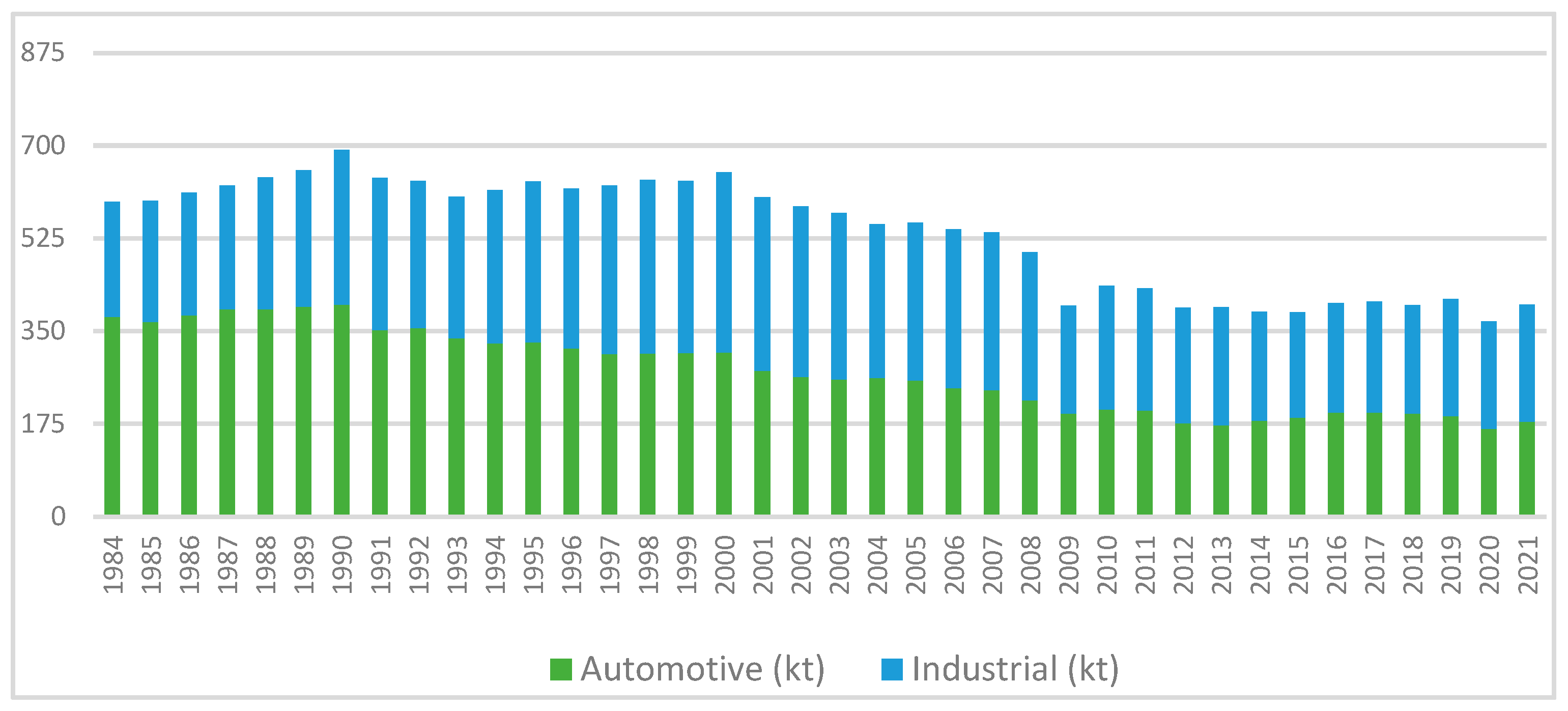
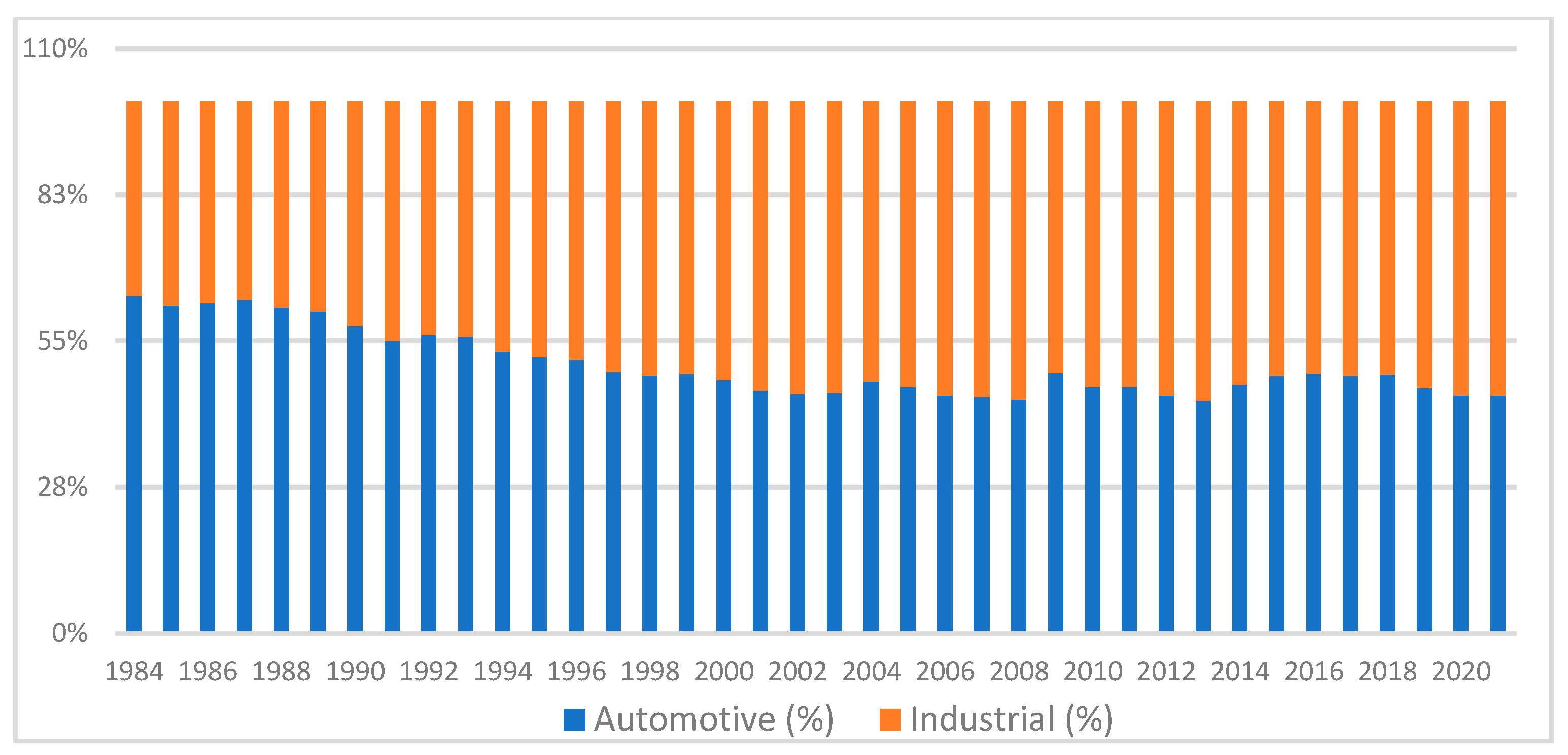
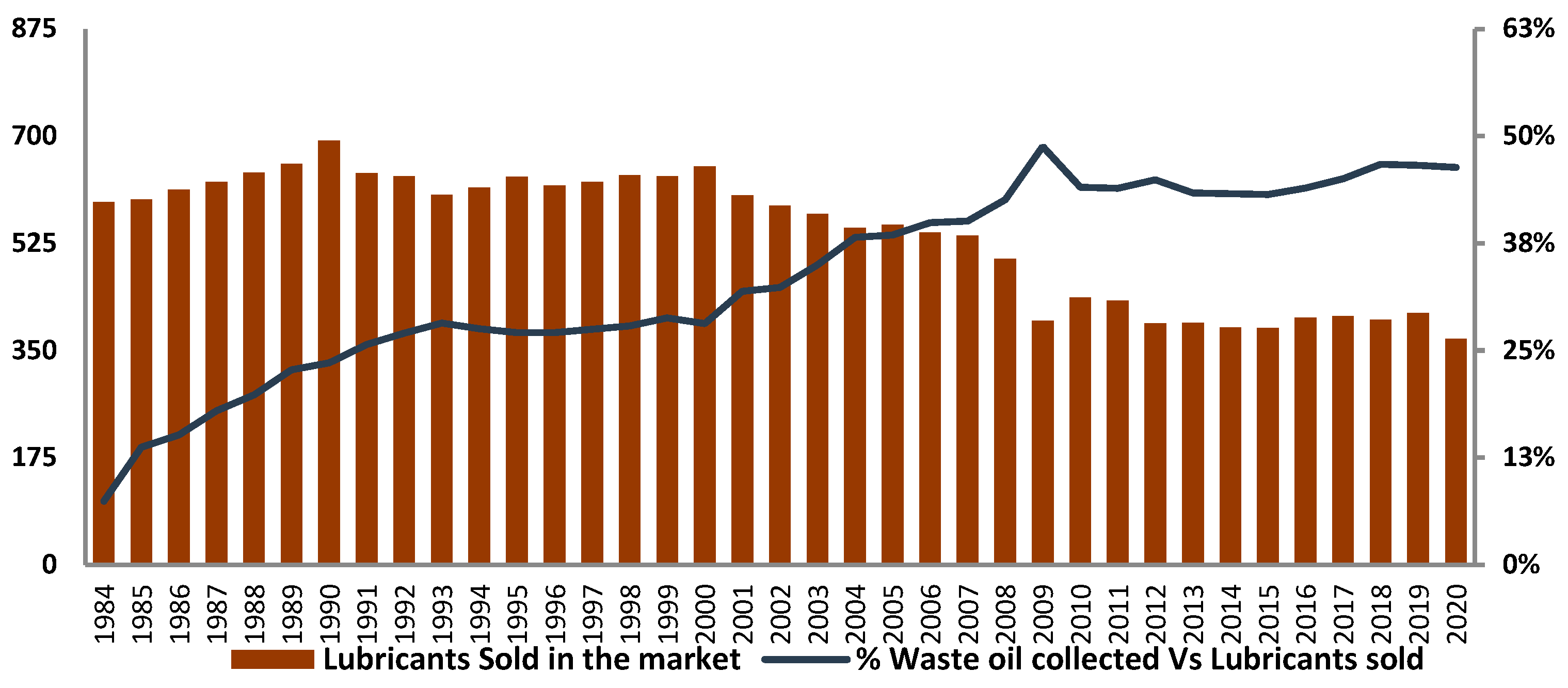
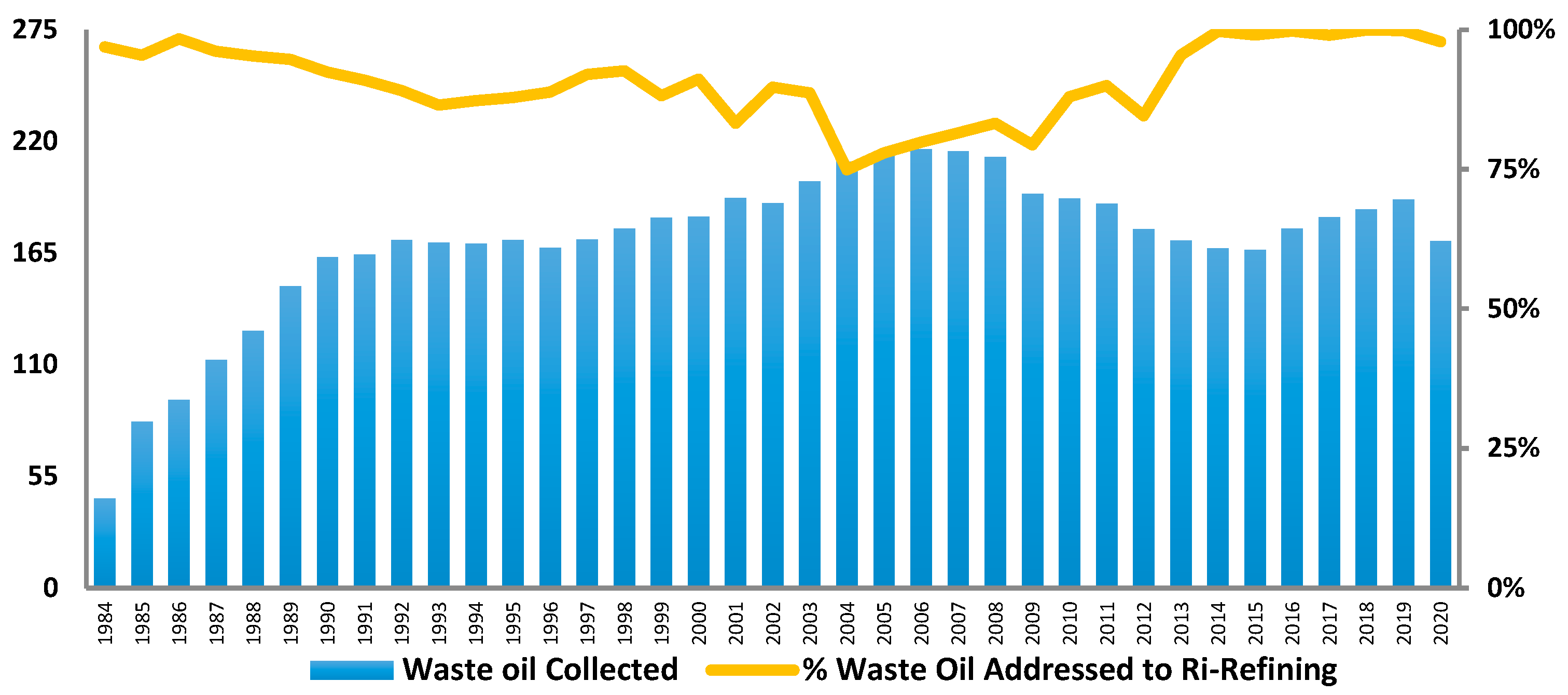

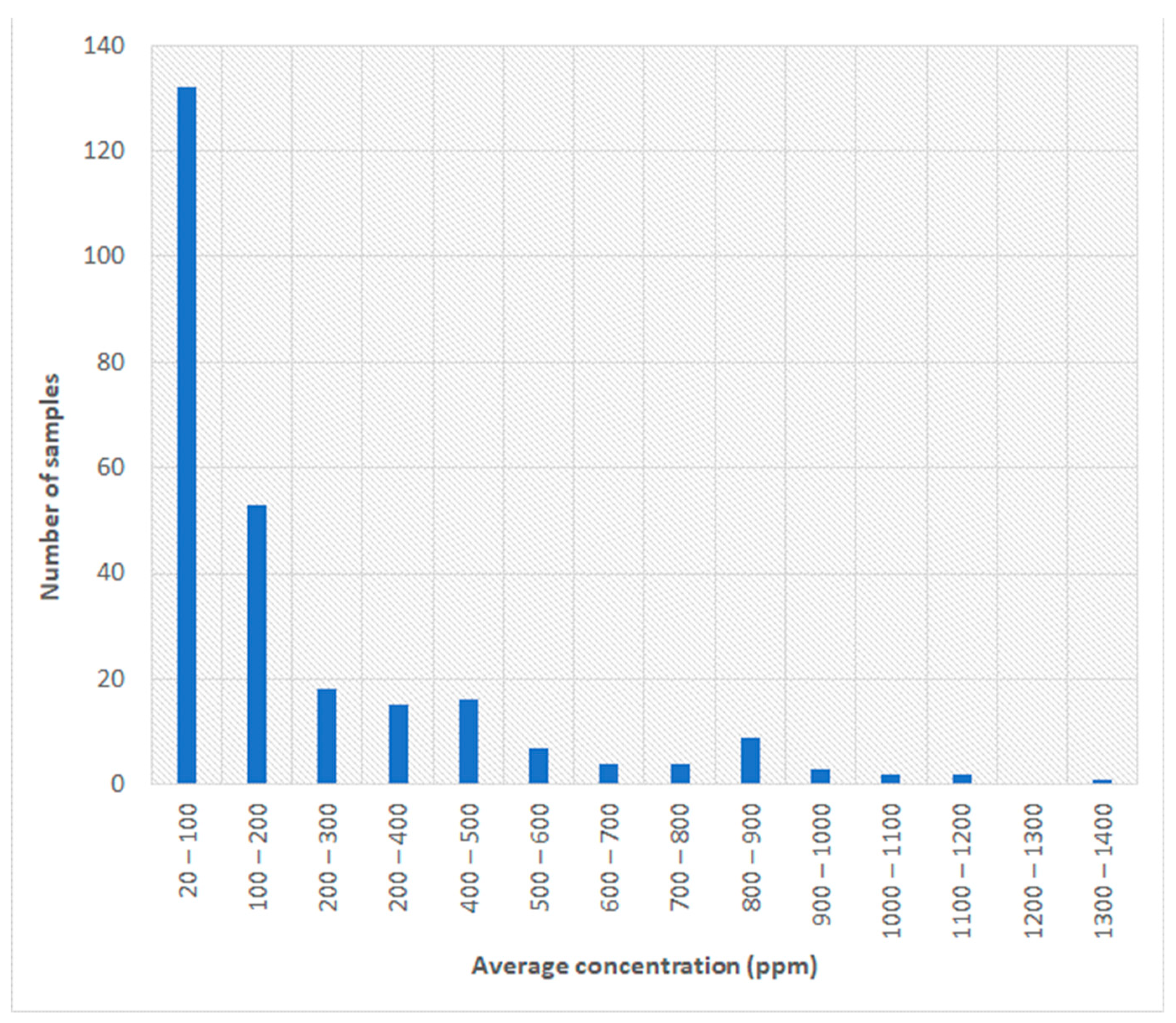
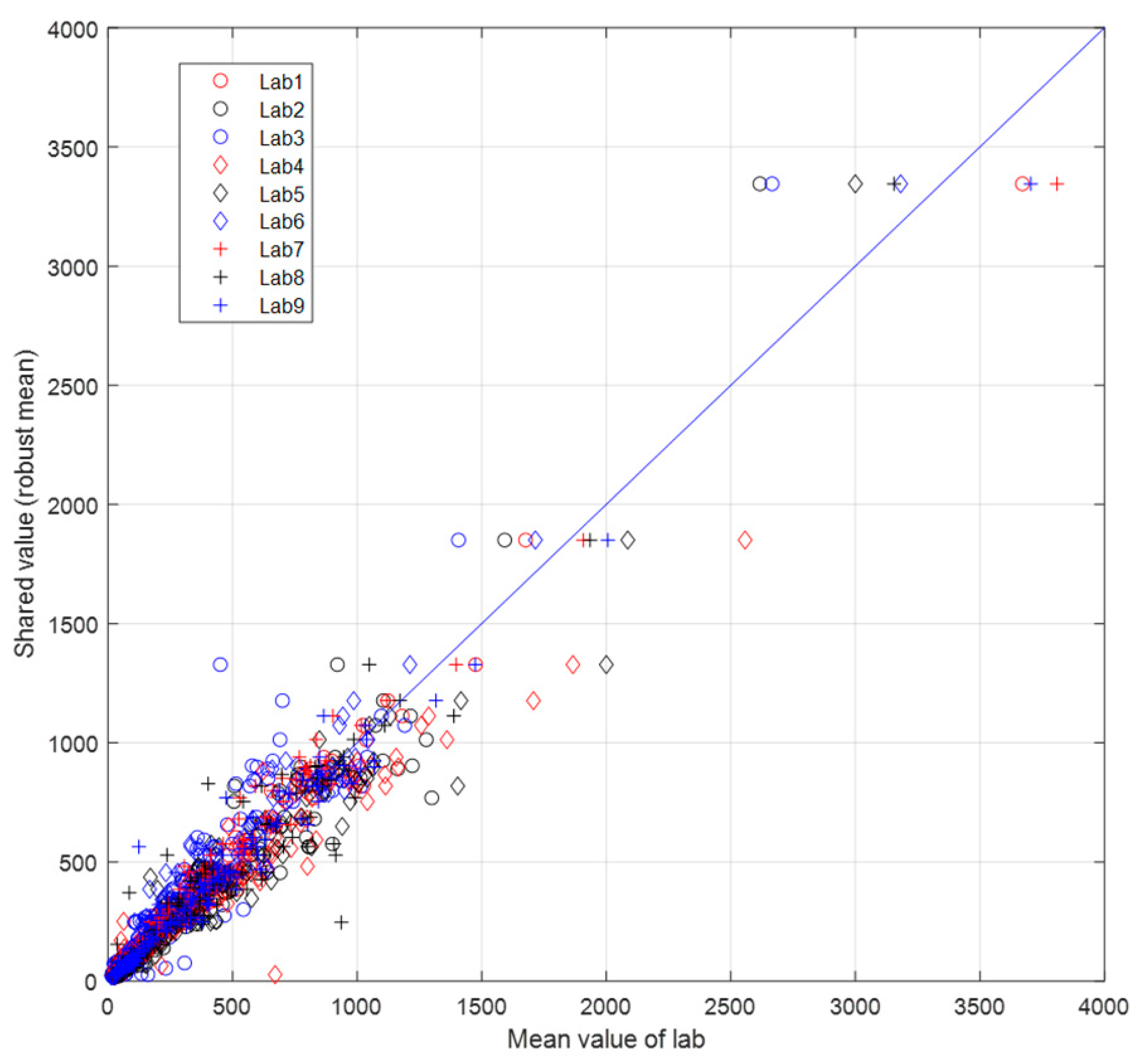


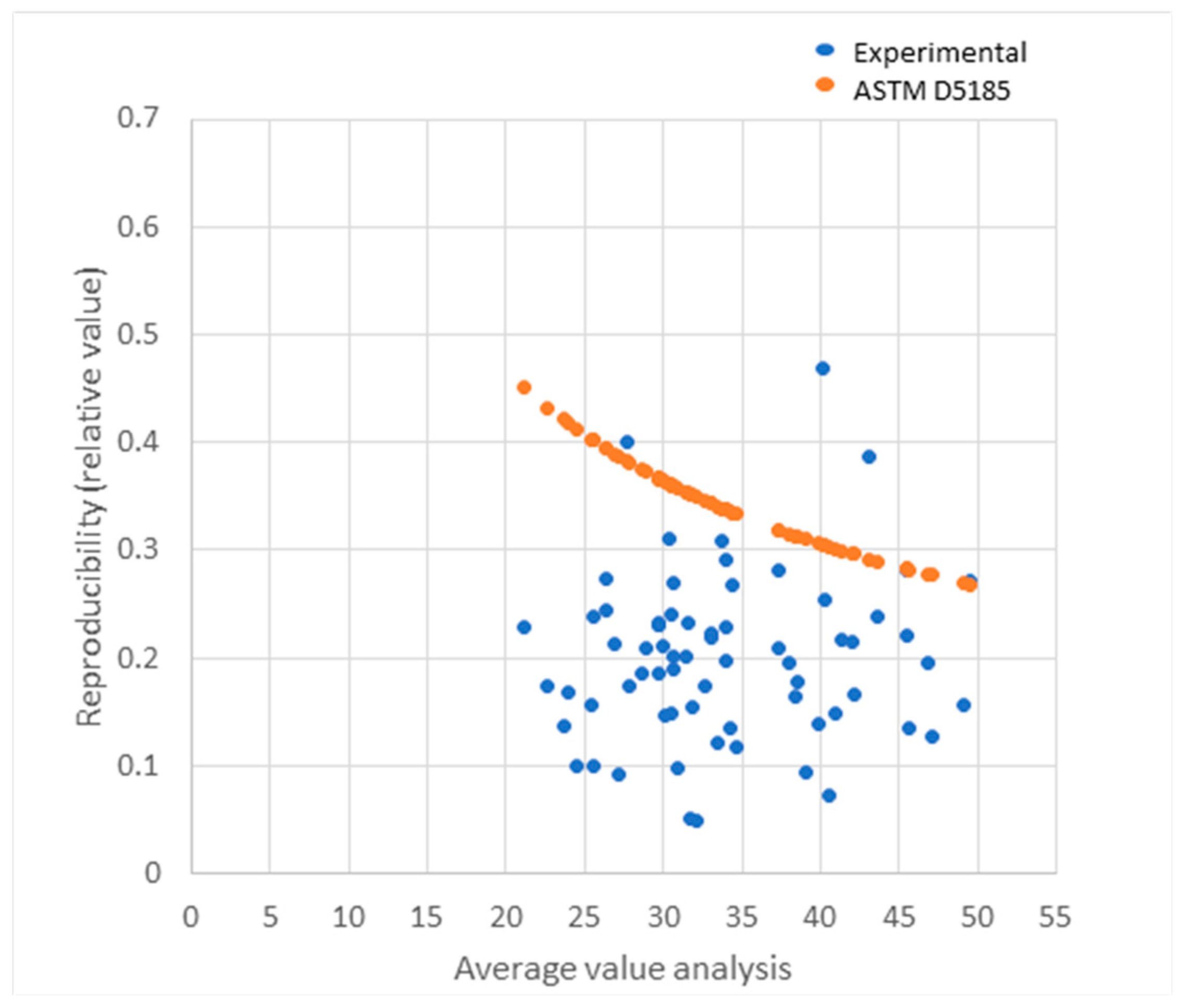

| Lab 01 | Lab 02 | Lab 03 | Lab 04 | Lab 05 | Lab 06 | Lab 07 | Lab 08 | Lab 09 | |
|---|---|---|---|---|---|---|---|---|---|
| z-score | 0.41 | 0.84 | 1.04 | 1.58 | 2.18 Warning | 0.78 | 0.58 | 0.72 | 0.47 |
| Lab 01 | Lab 02 | Lab 03 | Lab 04 | Lab 05 | Lab 06 | Lab 07 | Lab 08 | Lab 09 | |
|---|---|---|---|---|---|---|---|---|---|
| p % | 0.84 | 6.69 | 7.95 | 12.97 | 18.41 | 5.02 | 2.09 | 4.18 | 0.84 |
| Average RSDr | 0.0487 |
| Average RSDR | 0.2041 |
Disclaimer/Publisher’s Note: The statements, opinions and data contained in all publications are solely those of the individual author(s) and contributor(s) and not of MDPI and/or the editor(s). MDPI and/or the editor(s) disclaim responsibility for any injury to people or property resulting from any ideas, methods, instructions or products referred to in the content. |
© 2024 by the authors. Licensee MDPI, Basel, Switzerland. This article is an open access article distributed under the terms and conditions of the Creative Commons Attribution (CC BY) license (https://creativecommons.org/licenses/by/4.0/).
Share and Cite
Vitiello, R.; Taddeo, F.; Tesser, R.; Di Natale, G.; Trifuoggi, M.; Baldoni, M.; Di Serio, M. Analysis of Pollutants for the Sustainable Reuse of Waste Lubricant Oils. Sustainability 2024, 16, 2439. https://doi.org/10.3390/su16062439
Vitiello R, Taddeo F, Tesser R, Di Natale G, Trifuoggi M, Baldoni M, Di Serio M. Analysis of Pollutants for the Sustainable Reuse of Waste Lubricant Oils. Sustainability. 2024; 16(6):2439. https://doi.org/10.3390/su16062439
Chicago/Turabian StyleVitiello, Rosa, Francesco Taddeo, Riccardo Tesser, Gabriella Di Natale, Marco Trifuoggi, Mariano Baldoni, and Martino Di Serio. 2024. "Analysis of Pollutants for the Sustainable Reuse of Waste Lubricant Oils" Sustainability 16, no. 6: 2439. https://doi.org/10.3390/su16062439
APA StyleVitiello, R., Taddeo, F., Tesser, R., Di Natale, G., Trifuoggi, M., Baldoni, M., & Di Serio, M. (2024). Analysis of Pollutants for the Sustainable Reuse of Waste Lubricant Oils. Sustainability, 16(6), 2439. https://doi.org/10.3390/su16062439












